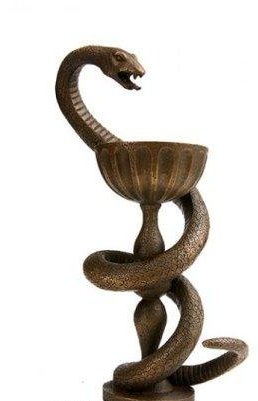Few drug-based treatments of obstructive sleep apnea are known despite over two decades of research and tests.
Oral administration of the methylxanthine theophylline (chemically similar to caffeine) can reduce the number of episodes of apnea, but can also produce side effects such as palpitations and insomnia. Theophylline is generally ineffective in adults with OSA, but is sometimes used to treat Central Sleep Apnea, and infants and children with apnea.
In earlier years, some neuroactive drugs, particularly a couple of the modern-generation antidepressants including mirtazapine, have been reported to reduce incidences of obstructive sleep apnea. As of 2004, these are not yet frequently prescribed for OSA sufferers.
When other treatments do not completely treat the OSA, drugs are sometimes prescribed to treat a patient’s daytime sleepiness or somnolence. These range from stimulants such as amphetamines to modern anti-narcoleptic medicines.
In some cases, weight loss will reduce the number and severity of apnea episodes, but for most patients overweight is an aggravating factor rather than the cause of OSA. In the morbidly obese a major loss of weight, such as occurs after bariatric surgery, can sometimes cure the condition.
Neurostimulation
Many researchers believe that OSA is a neurological condition, in which nerves that control the tongue and soft palate fail to sufficiently stimulate those muscles, leading to over-relaxation and airway blockage.
A few experiments and trial studies have explored the use of pacemakers and similar devices, programmed to detect breathing effort and deliver gentle electrical stimulation to the muscles of the tongue. This is not a common mode of treatment for OSA patients, but it is an active field of research.
Surgical Intervention
A number of different surgeries are often tried to improve the size or tone of the patient’s airway. For decades, tracheostomy was the only effective treatment for sleep apnea. It is used today only in very rare, intractable cases that have withstood other attempts at treatment.
Modern treatments try one or more of several options, tailored to the patient’s needs. Often the long term success rate is low, prompting many doctors to favor CPAP as the treatment of choice.
Nasal surgery, including turbinectomy (removal or reduction of a nasal turbinate), or straightening of the nasal septum, in patients with nasal obstruction or congestion which reduces airway pressure and complicates OSA.
Tonsillectomy and/or adenoidectomy in an attempt to increase the size of the airway.
Removal or reduction of parts of the soft palate and some or all of the uvula, such as uvulopalatopharyngoplasty or laser-assisted uvulopalatoplasty. Variations of this procedure sometimes use radio frequency waves to heat and remove tissue.
Reduction of the tongue base, either with laser excision or radio frequency ablation.
Genioglossus Advancement, in which a small portion of the lower jaw which attaches to the tongue is moved forward, to pull the tongue away from the back of the airway.
Hyoid Suspension, in which the hyoid bone in the neck, another attachment point for tongue muscles, is pulled forward in front of the larynx.
Maxillomandibular advancement. A more invasive surgery usually only tried in difficult cases where other surgeries have not relieved the patient’s OSA, or where an abnormal facial structure is suspected as a root cause.
In MMA, the patient’s upper and lower jaw are detached from the skull, moved forward, and reattached with pins and/or plates.
Pillar procedure, three small inserts are injected into the soft palate to offer support, reducing snoring and sleep apnea.
The type of surgery is necessary for you will depend on the severity of your sleep apnea. Explore all the possibilities with your doctor.

